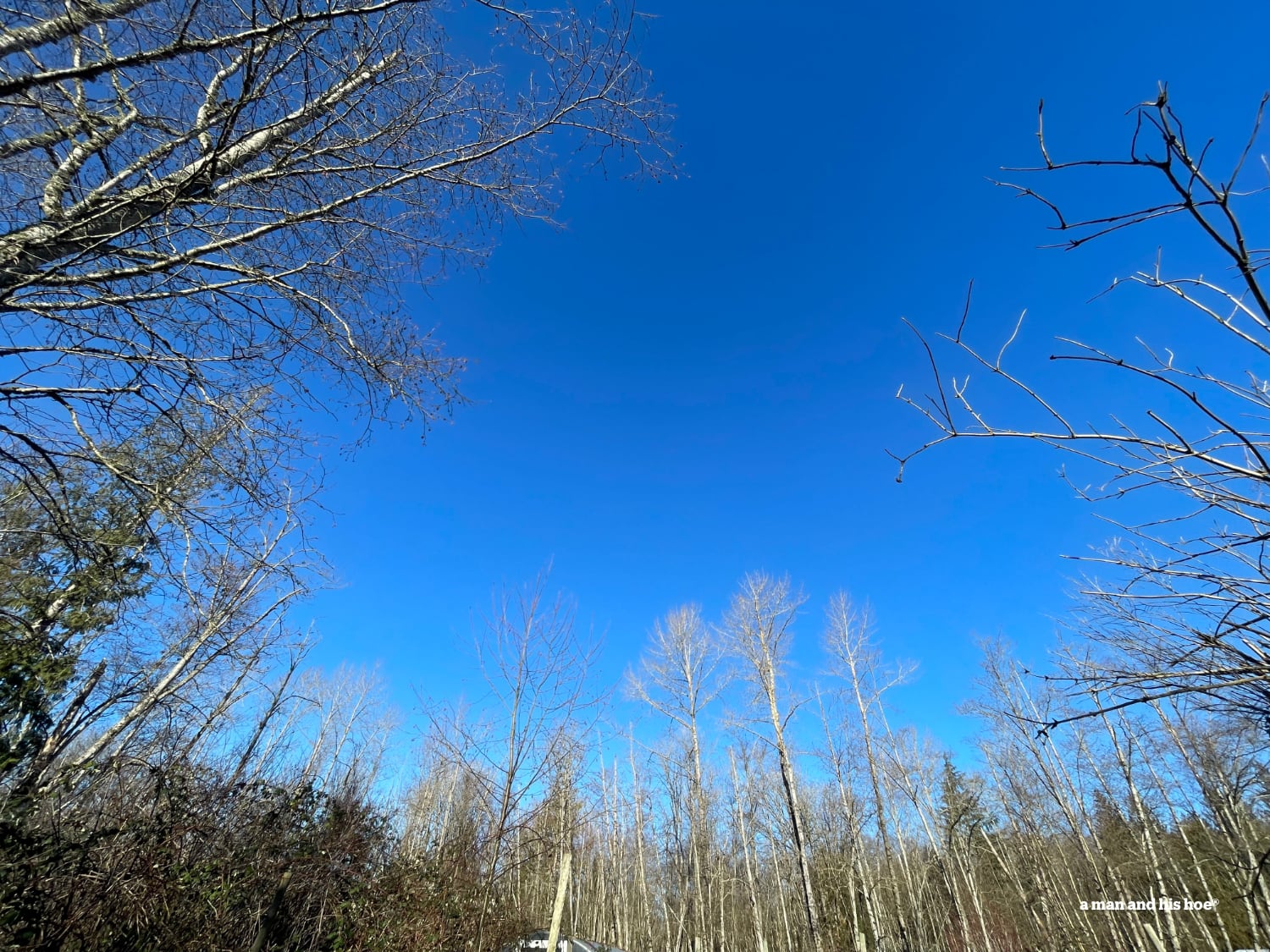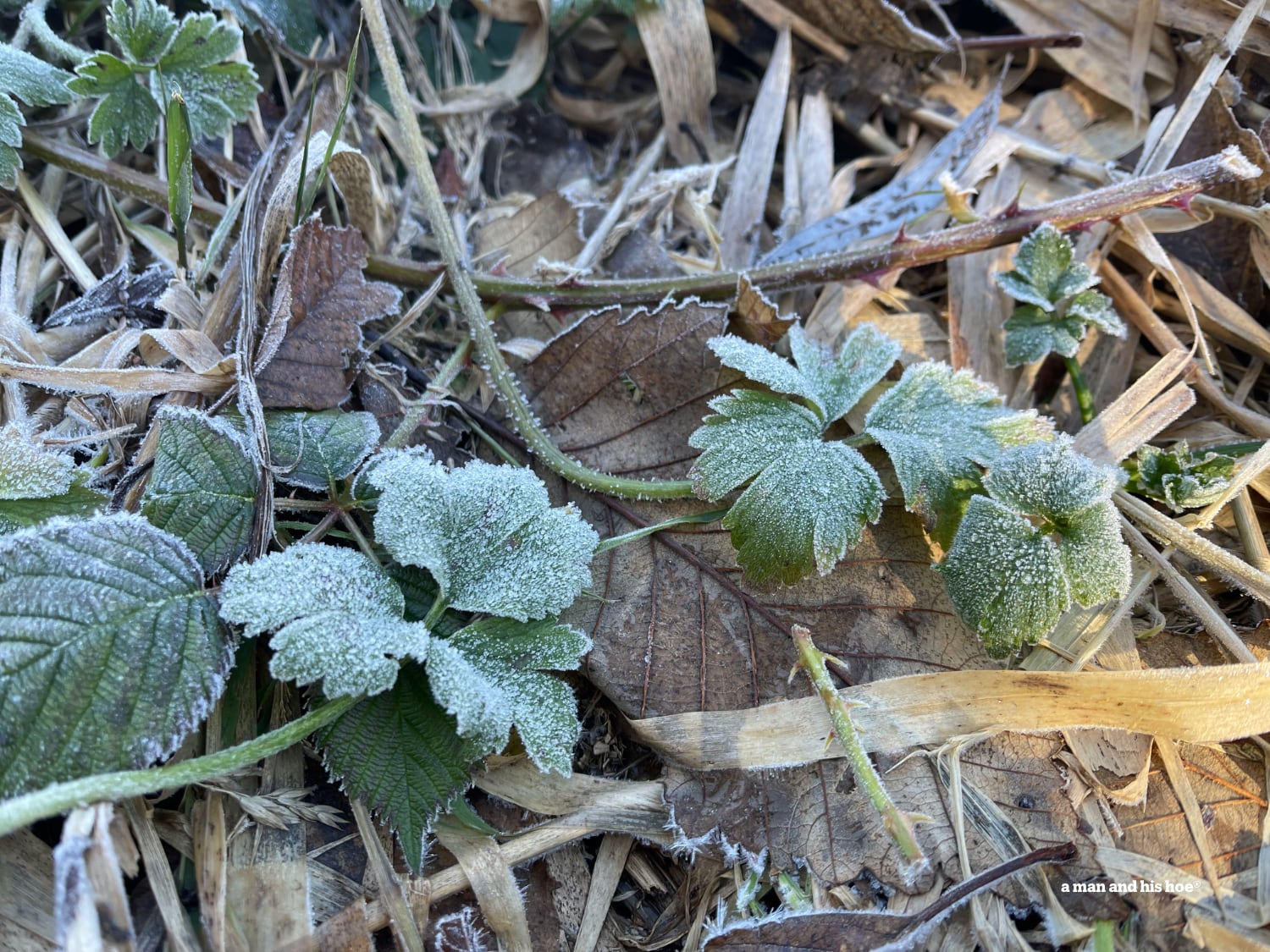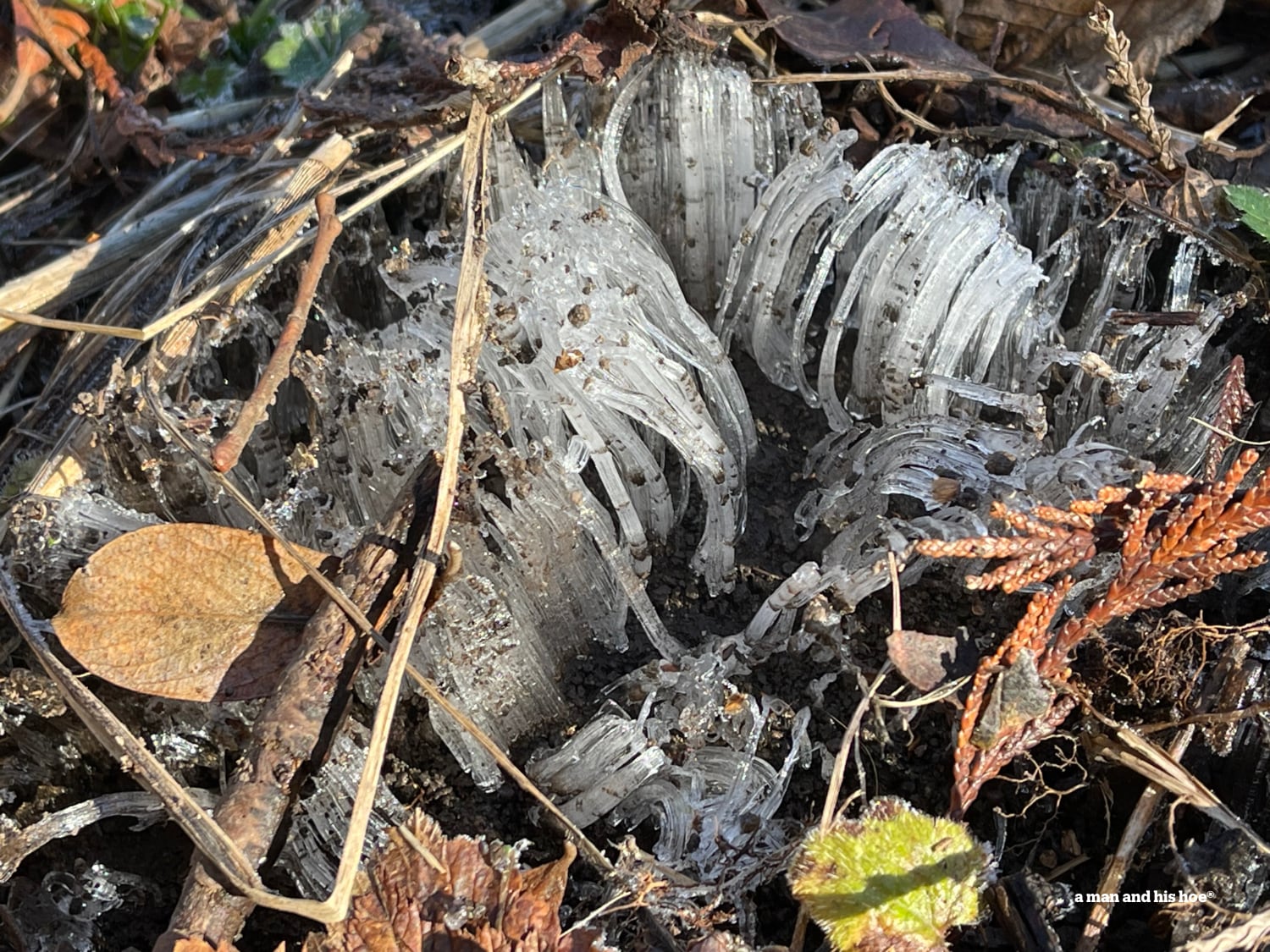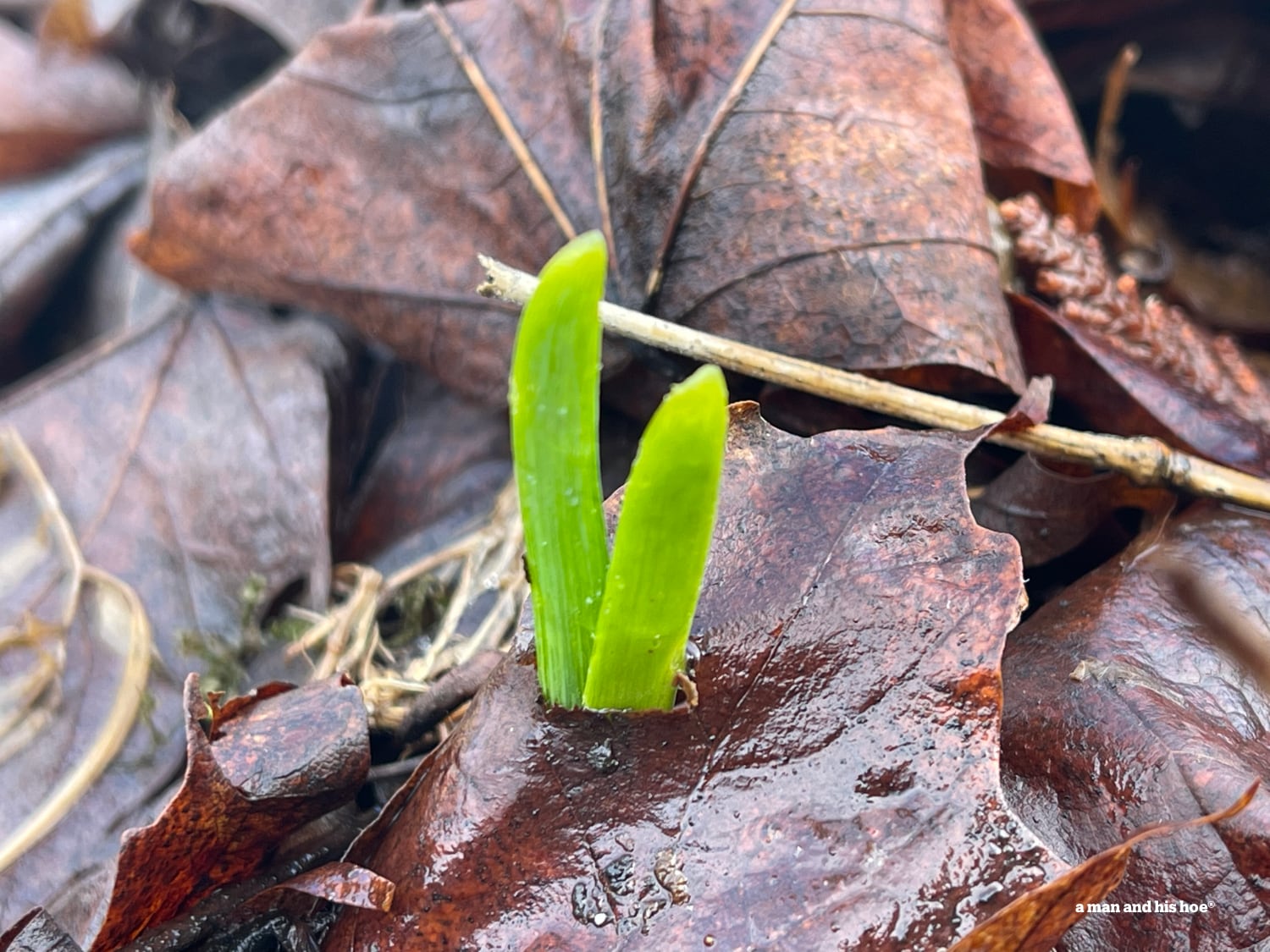Your cart is currently empty!
Mystery Tea

The sky could not be more blue than it is today. Spring is in the air. More than five weeks since the winter solstice, the sun is as strong as it is in mid November.
We had freezing temperatures this morning for the first time in quite a while.


A light frost touched the grass and leaves. Needle ice pushed icy waves out of the ground. If I had the patience, I’d spend a night out and film needle ice forming.

The garlic is popping out of the ground. These shoots poked through the leaves covering the garlic bed. Just how thick a matter could they pierce? This is a great time of year. You can see winter fading and spring arriving. It’s a time of great expectations.
But I never expected to learn what I saw on Japanese TV a few days ago. Even the announcers were surprised to learn about a new, mysterious tea. Takeshi Maruoka, a doctoral student at Kyoto University, studies Chemical Ecology. During his studies he became fascinated with insects. And discovered that the droppings of caterpillars which ate cherry blossom leaves smelled like cherries.
So he made a tea from those caterpillar droppings and was amazed at how delicious it was. Since then, he’s made tea from the droppings of many kinds of caterpillars eating many kinds of plants.
Mr. Maruoka formed a company called Chu-Hi-Cha, which translates to Bug-Mystery-Tea 虫秘茶. He plans on commercializing this mysterious tea and bringing it to market this summer.
According to the clip I saw, tea from the caterpillars which eat chestnut leaves and from caterpillars eating cherry blossom leaves are his favorite.
Someone recorded that clip and here it is. It is in Japanese but you can get an idea of what these caterpillar droppings look like and how to make tea from them.
So is this safe? Caterpillars are doing pretty much the same process that makers of black and Chinese tea use. The caterpillars chew the leaves, ferment the leaves in their bodies, and pop it out as little pellets. They are miniature tea making factories.
Mr. Maruoka had these pellets analyzed for safety, and they have no harmful bacteria. There is no danger of getting food poisoning by drinking tea from the caterpillar droppings.
With tens of thousands of plants eaten by tens of thousands of varieties of caterpillars, the variety of teas that can be made by caterpillars is endless.
But this isn’t new. People have been making tea from caterpillar droppings since the late 1700s in China. In Chéngbù in Hunan, a tea farmer stored tea leaves in a hut. But rain leaked into the hut and moths ate all the leaves, leaving behind just their droppings.
While cleaning up the hut, some to the droppings fell into water and the farmer noticed that the water turned reddish like tea and he saw bits of tea leaves in the water. So he took some of the droppings, added hot water to them, and learned that you could make delicious tea from them.
And if you are curious, search for bug poop tea. It’s a thing.